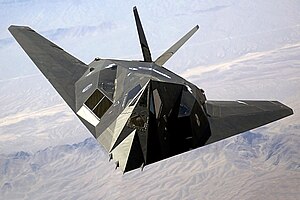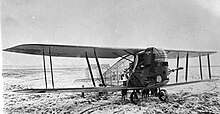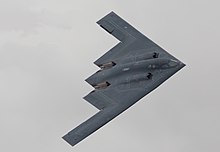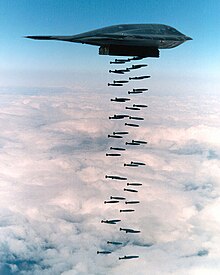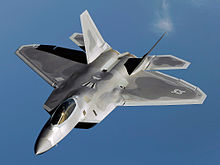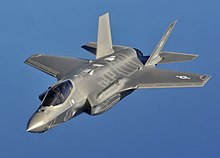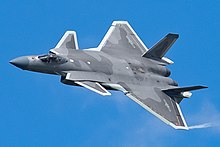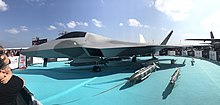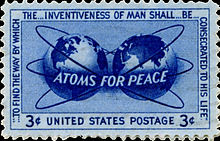From Wikipedia, the free encyclopedia
Science diplomacy is the use of scientific collaborations
among nations to address common problems and to build constructive
international partnerships. Science diplomacy is a form of new diplomacy
and has become an umbrella term to describe a number of formal or
informal technical, research-based, academic or engineering exchanges,
within the general field of international relations and the emerging field of global policy making.
Although diplomacy featuring science is ancient, science
diplomacy began to formally emerge in the 1930s, and the term science
diplomacy appeared shortly after the end of the Cold War. Science
diplomacy is taken to involve the direct promotion of a country's
national needs, and/or the direct promotion of cross-border interests,
and/or the direct meeting of global challenges and needs, including via
the United Nations system and relevant conferences. Its remit thus
includes the global networked governance of such major global issues as development of renewable energy, management of climate change, fusion power, space exploration, and technology transfer.
Notable developments in science diplomacy may arise as the result
of scientific conferences and can feature the creation of new
organizations to promote science diplomacy. Examples include the 1931
founding of the International Council of Scientific Unions, now the International Council of Science (ICSU); CERN, founded in 1954; the International Space Station, which had its origin in the early 1980s; and the ITER
nuclear fusion experiment, conceived of around the same time. In more
recent years, science diplomacy has been applied to pandemics and to the
new age space race, in the form of space diplomacy.
Background
Science diplomacy, along with e.g. economic, digital or para-diplomacy, is a subcategory of the so-called new diplomacy, as opposed to the long-standing traditional diplomacy known to date. Science diplomacy is thus also a sub-field of international relations and typically involves at some level interactions between scholars and officials involved in diplomacy, although whether scientist diplomats or diplomat scientists are more effective is an open question.
That said, forms of science diplomacy originated in previous centuries. The great voyages of exploration
and colonization brought with them science-based diplomacy – such as
trade in rifles in North America – as a form of diplomacy of influence.
The emergence of blocs during the era of industrial warfare also saw the
deployment of technology as a means of influencing less developed
countries, with the Cold War bringing ideologically bloc-based science diplomacy, in areas such as space exploration and the development of fission reactors and weapons, to its ultimate incarnation.
The term ‘science diplomacy’ only began to emerge following the end of the Cold War,
in the early 2000s, as a description of the need for new strategic
partnerships at the country level to promote “activities of
international cooperation and compromise on issues with a heavy
scientific input”, on issues of global concern, such as biosafety. This involved the development of strategic scientific relations between historical or potential rival countries or blocs
as a way to promote scientific cooperation to the extent that it could
hedge against diplomatic failures and reduce the potential for conflict.
As one UNCTAD
researcher stated, “These activities and resulting networks offer
excellent opportunities to share resources and hedge against diplomatic
failures through exchanging experiences, opening countries up to better
funding opportunities from international sources and sharing
organisational capacity and expertise.”
In the second half of the first decade of the twenty-first century,
calls for the promotion of science diplomacy emerged in earnest,
especially between the West and former Soviet Union countries.
Definition
The
concept of science diplomacy in academic discourse is of relatively
recent origin. The intensification of research, including attempts to
define and classify practices that can be included in the science
diplomacy category, date from the beginning of the 21st century. The
attempts to conceptualise science diplomacy are still ongoing. There
exists neither a clear-cut definition of the term nor a consensus on
science diplomacy's stakeholders, instruments and activities. Science
diplomacy as a discourse draws the attention of multiple social actors
who present diverse interpretations of the concept. The debate is
attended by researchers who treat science diplomacy as an empirical
object and by actors who are or have been involved in science diplomacy
practices in various ways. These are career diplomats,
science counsellors/advisers, experts to national and international
decision-making bodies, and politicians. They perceive science diplomacy
through the lens of interests (national, group) and goals to be
fulfilled. Therefore, the definition of science diplomacy is not based
on analytical categories but draws its meaning from a compilation of
different narratives, approaches and ideas of changing relations between
science and politics, science and foreign policy and the evolution of
diplomacy as an institution of international relations.
Types of activities
In January 2010, the Royal Society and the American Association for the Advancement of Science noted that "science diplomacy" refers to three main types of activities:
- “Science in diplomacy”: Science can provide advice to inform and support foreign policy objectives
- “Diplomacy for science”: Diplomacy can facilitate international scientific cooperation
- "Science for diplomacy”: Scientific cooperation can improve international relations
In 2017, the current and former science advisers to the Foreign
Ministers of the United States, New Zealand, the UK and Japan framed
science diplomacy as
- Actions designed to directly advance a country's national needs
- Actions designed to address cross-border interests
- Actions primarily designed to meet global needs and challenges
Before the term science diplomacy was coined, such initiatives—-in
the United States—were often called “smart power” or “soft power” by
those in the field. The term, “soft power,” was coined by Joseph Nye of Harvard University in a 1990 book, Bound to Lead: The Changing Nature of American Power.
In an editorial in the Washington Post that he cowrote with Richard
Armitage, he said, "In a changing world, the United States should become
a smarter power by once again investing in the global good -- by
providing things that people and governments want but cannot attain
without U.S. leadership. By complementing U.S. military and economic
strength with greater investments in soft power, Washington can build
the framework to tackle tough global challenges."
His notion of "smart power" became popular with the term's use by
members of the Clinton and Obama Administrations, although the Obama
Administration also used the term science diplomacy.
Bridging the world through science
United Nations Educational, Scientific and Cultural Organisation
Science as a tool for diplomacy has been used for several decades and by many countries around the world. Science diplomacy can be seen as a form of networked and transnational governance, involving human collaboration, especially via United Nations bodies such as UNESCO.
In particular, it suggests a means for helping manage paradigmatic and
disruptive change. For instance, the sheer scale of the problem of
climate change has caused researchers to call for the reinvention of
science communication in order to address humanity's cognitive limits in
coping with such a crisis, with the International Panel on Climate Change alone constituting a science-diplomacy nexus. Especially within the context of the Sustainable Development Goals,
the first calls to begin seeing science and its products as global
public goods which should be tasked to fundamentally improve the human
condition, especially in countries which are facing catastrophic change,
are being made.
Science diplomacy challenges the way international relations operates
as a field of human endeavor, presenting a ‘boundary problem’ involving
actors from different social worlds.
There are numerous basic patterns via which scientific and technological advances influence international relations. These include:
- as a juggernaut or escaped genie with rapid and wide-ranging ramifications for the international system;
- as a game-changer and a conveyor of advantage and disadvantage to different actors in the international system;
- as a source of risks, issues and problems that must be addressed and managed by the international community;
- as key dimensions or enablers of international macro phenomena;
- as instruments of foreign policy or sources of technical information for the management of an ongoing international regime;
- as the subject of projects and institutions whose planning, design,
implementation and management provide grist for the mill of
international relations and diplomacy.
While both science and technology create new risks in and of
themselves, they can also alert humanity of risks, such as global
warming, in both cases transforming commerce, diplomacy, intelligence,
investment, and war.
One of the earliest ventures in joint scientific cooperation was in 1931 with the creation of the International Council of Scientific Unions, now the International Council of Science (ICSU).
Through partnerships with international science unions and national
science members, the ICSU focuses resources and tools towards the
further development of scientific solutions to the world's challenges
such as climate change, sustainable development, polar research, and the
universality of science.
Small-scale model of ITER
The civilian scientific exchanges between the United States and the
then Soviet Union throughout the Cold War provide another example of
science diplomacy. These collaborations linked the two countries when
official diplomatic connections were stalled. Today, the U.S. and Russia work together on the International Space Station and on the ITER nuclear fusion science experiment.
Another example is European Organization for Nuclear Research (CERN). Following a series of meetings, UNESCO
hearings and a formal ratification by 12 member nations—Belgium,
Denmark, France, the Federal Republic of Germany, Greece, Italy, the
Netherlands, Norway, Sweden, Switzerland, the United Kingdom and
Yugoslavia— CERN was created. At present, CERN is run by 20 European
member states,
but many non-European countries are also involved in different ways.
Scientists from some 608 institutes and universities around the world
use CERN's facilities.
Individuals who are not connected with the government have also
practiced science diplomacy. For example, in 1957, American
philanthropist Cyrus Eaton
hosted a meeting of 22 scientists (seven from the United States, three
each from the Soviet Union and Japan, two each from the United Kingdom
and Canada, and one each from Australia, Austria, China, France, and
Poland) in the village of Pugwash, Nova Scotia, Canada. The stimulus for the gathering was a Manifesto
issued on 9 July1955 by Bertrand Russell and Albert Einstein—and signed
by Max Born, Percy Bridgman, Leopold Infeld, Frédéric Joliot-Curie,
Herman Muller, Linus Pauling, Cecil Powell, Joseph Rotblat and Hideki
Yukawa—which called upon scientists of all political persuasions to
assemble to discuss the threat posed to civilization by the advent of
thermonuclear weapons.
The meetings eventually grew and gathered the attention of high level
government officials. Since then, scientists have continued to gather at
the Pugwash Conferences.
In 1967, the African Scientific Institute
was created to help African scientists reach others through published
materials, conferences, seminars and provide tools for those who lack
them. And in 1996, countries with interests in the Arctic came together to form the Arctic Council to discuss sustainable development and environmental protection.
In the beginning of the new century, the term "science diplomacy" gained popularity during the Obama administration, and academics called for a 'new era' of science diplomacy. In 2009, President Barack Obama called for partnership during his “A New Beginning” speech in Cairo, Egypt.
These partnerships would include a greater focus on engagement of the
Muslim world through science, technology, and innovation building and
connecting scientists from the United States to scientists in
Muslim-majority countries.
By the 2010s, the early emphasis on biosafety and plant genetic
resources had given way to a longer list of specific risks for science
diplomacy to address, including “the rising risks and dangers of climate
change, a spread of infectious diseases, increasing energy costs,
migration movements, and cultural clashes”. Additional areas of interest include space exploration; the exploration of fundamental physics (e.g., CERN and ITER); the management of the polar regions; health research; the oil and mining sectors; fisheries; and international security, including global cybersecurity, as well as enormous geographic areas, such as the transatlantic and Indo-Pacific regions.
Increasingly, science diplomacy has come to be seen as a multilateral
endeavor to address both global challenges and the matter of global
goods, via science internationals (such as the Malta Conferences); international NGOs, especially UN bodies; and various science-policy interfaces, such as the U.S. National Academies system.
Several U.S. Government agencies, including the White House the State Department,
and USAID have science and technology offices and advisors to aid with
developing and creating S&T outreach policy. These advisors are
regular speakers (e.g., J. Holdren, E.W. Colglazier, A. Dehgan, in 2010 and 2011) at meetings of the Science Diplomats Club of Washington, to strengthen links with foreign "science diplomats". E.W Colglazier and Alex Dehgan have also contributed to Science & Diplomacy.
Additionally, several non-profit organizations in the United
States have continued science diplomacy practices in their work. CRDF
Global, in partnership with the U.S. Department of State, launched the Global Innovation through Science and Technology (GIST)
initiative in 2010 in Egypt with follow-up meetings in Malaysia and
Morocco in 2011. In addition to the GIST Initiative, CRDF Global has
been active in both the United States and in the Middle East on
promoting science diplomacy through conferences, panel discussions and
programs including the Iraqi Virtual Science Library, Maghreb Virtual Science Library, and the Afghanistan Virtual Science Library.
The American Association for the Advancement of Science (AAAS) established the Center for Science Diplomacy
whose goal is to use science and scientific cooperation to promote
international understanding. “It approaches this goal by providing a
forum for scientists, policy analysts, and policy-makers through whom
they can share information and explore collaborative opportunities”. In
March 2012, the center launched the quarterly publication Science & Diplomacy Additionally, CRDF Global, the Partnership for a Secure America and AAAS have worked together on science diplomacy initiatives and events. Others, such as the Science and Development Network (SciDev.Net) have dedicated an entire portion of their website for science diplomacy related articles, events and op-ed pieces.
The European Union is also concerned with science diplomacy. Science collaboration is seen as a way to make diplomacy through "parallel means". Several EU-funded projects are currently exploring and conducting research on the topic of science diplomacy.
Implementing science diplomacy
American stamp of 1955 in allusion to the program Atoms for Peace
The first major post-War science-based diplomatic initiative was the Baruch Plan, which sought to internationalize fission under the newly formed United Nations Atomic Energy Commission and stop an atomic arms race. When this failed, the Cold War resulted, and America developed a separate fission energy diplomatic program, the 'Atoms for Peace' initiative.
John F. Kennedy
established a science and technology cooperation agreement with Japan
in 1961 following appeals to repair the “broken dialogue” between the
two countries’ intellectual communities after World War II. That
agreement helped round out a tenuous relationship at the time rooted
only in security concerns.
In the 1970s, Henry Kissinger
requested, and took, several science initiatives to his talks with
China. These initiatives focused on areas in which both countries could
participate; as evidenced in the Shanghai Communiqués.
In 1979, when official diplomatic ties were established between China
and the U.S., science played a big role in the shaping of renewed
efforts, and December 2010 marked the 30th anniversary of normalized
relations between the United States and China.
The late 1980s saw the development of the International Thermonuclear Experimental Reactor (ITER), an international nuclear fusion research and engineering megaproject, which will be the world's largest magnetic confinement plasma physics
experiment when it begins plasma operations in 2025. ITER began in 1985
as a Reagan–Gorbachev initiative with the equal participation of the
Soviet Union, the European Atomic Energy Community, the United States, and Japan through the 1988–1998 initial design phases. Preparations for the first Gorbachev-Reagan Summit
showed that there were no tangible agreements in the works for the
summit. One energy research project, however, was being considered
quietly by two physicists, Alvin Trivelpiece and Evgeny Velikhov.
The project involved collaboration on the next phase of magnetic fusion
research — the construction of a demonstration model. At the time,
magnetic fusion research was ongoing in Japan, Europe, the Soviet Union
and the US. Velikhov and Trivelpiece believed that taking the next step
in fusion research would be beyond the budget of any of the key nations
and that collaboration would be useful internationally.
A major bureaucratic fight erupted in the US government over the
project. One argument against collaboration was that the Soviets would
use it to steal US technology and know-how. A second was symbolic — the
Soviet physicist Andrei Sakharov was in internal exile and the US was pushing the Soviet Union on its human rights record. The United States National Security Council convened a meeting under the direction of William Flynn Martin that resulted in a consensus that the US should go forward with the project, which will continue into the 2030s and 2040s.
In the years following the end of the Cold War, U.S. Congressman George E. Brown Jr. was an outspoken champion of science and technology issues, particularly in international relations. As Chairman of the House Science Committee,
Rep. Brown promoted conservation and renewable energy sources,
technology transfer, sustainable development, environmental degradation,
and an agency devoted to civilian technology when there were few
listeners, and even fewer converts.
Consistent with his long-held conviction that the nation needed a
coherent technology policy, Brown articulated his concept of a
partnership between the public and private sectors to improve the
nation's competitiveness. His concern for demonstrating the practical
applications of advances in science and technology laid the foundation
for what became the U.S. Civilian Research & Development Foundation, later CRDF Global—a
private non-profit organization initially established to promote
bilateral science and technology collaborations between the U.S. and
newly independent states of the former Soviet Union. Brown also helped
establish the White House Office of Science and Technology Policy, the Environmental Protection Agency, the (now defunct) Office of Technology Assessment and the first federal climate change research program in the Federal Climate Program Act of 1978.
On March 12, 2010, Congressman Howard Berman (D-CA) and Congressman Jeff Fortenberry (R-NE) introduced the Global Science Program for Security, Competitiveness, and Diplomacy Act, which proposed an increase in the application of science and scientific engagement in America's foreign policy.
Additionally, several non-profit organizations in the United
States have continued science diplomacy practices in their work. CRDF
Global, in partnership with the U.S. Department of State, launched the Global Innovation through Science and Technology (GIST)
initiative in 2010 in Egypt with follow-up meetings in Malaysia and
Morocco in 2011. In addition to the GIST Initiative, CRDF Global has
been active in both the United States and in the Middle East on
promoting science diplomacy through conferences, panel discussions and
programs including the Iraqi Virtual Science Library, Maghreb Virtual Science Library, and the Afghanistan Virtual Science Library.
The American Association for the Advancement of Science (AAAS) established the Center for Science Diplomacy
whose goal is to use science and scientific cooperation to promote
international understanding. “It approaches this goal by providing a
forum for scientists, policy analysts, and policy-makers through whom
they can share information and explore collaborative opportunities”. In
March 2012, the center launched the quarterly publication Science & Diplomacy Additionally, CRDF Global, the Partnership for a Secure America and AAAS have worked together on science diplomacy initiatives and events. Others, such as the Science and Development Network (SciDev.Net) have dedicated an entire portion of their website for science diplomacy related articles, events and op-ed pieces.
The Malta Conferences Foundation seeks to provide a bridge to peace in the Middle East through science diplomacy. Starting in 2001, Dr. Zafra Lerman began working with the American Chemical Society
Subcommittee on Scientific Freedom and Human Rights to develop a
scientific conference that would bring together researchers from many
different, often mutually hostile, nations in the Middle East so they could cooperatively work toward solving problems facing the region. With support from the American Chemical Society (ACS), International Union of Pure and Applied Chemistry (IUPAC), the Royal Society of Chemistry (RSC - England), and the Gesellschaft Deutscher Chemiker, the first conference was held on the island of Malta from December 6 to 11, 2003. Attendees included six Nobel Laureates and scientists from 15 Middle Eastern Countries (Bahrain, Egypt, Iran, Iraq, Israel, Jordan, Kuwait, Lebanon, Libya, Palestinian Authority, Qatar, Saudi Arabia, Syria, Turkey, and United Arab Emirates). The conference included five workshops to foster cross-border collaborations:
- Nanotechnology and material science
- Medicinal chemistry and natural products
- Alternative energy
- Science education for all levels
- Environment - Air and water quality
The organizers followed up by hosting a second meeting two years later, Malta II. The meeting was honored by United States Senator Dick Durbin in a speech on the floor of the U.S. Senate entitled "Chemists Working Cooperatively".
Lerman led the initiative to continue with the conferences and
founded the Malta Conferences Foundation to support them. She secured
the support of UNESCO, the United Nations Educational, Scientific, and Cultural Organization.
List of Malta Conferences
The American Association for the Advancement of Science awarded Zafra Lerman the 2014 Award for Science Diplomacy.
In Spain, in December 2018, a group of stakeholders and experts
on science diplomacy from around the world coming together at a global
conference in Madrid defined several principles and highlighted the
benefits of science diplomacy. As a result, the “Madrid Declaration on
Science Diplomacy” was signed by a group of high-level experts who
contributed to the conference. It proclaims a common vision of science
diplomacy in the future, emphasises the benefits science diplomacy can
bring to tackling the global challenges of our time and outlines the
principles needed to foster science diplomacy worldwide.
Importance of science diplomacy
In a speech at the 2008 Davos World Economic Forum, Microsoft Chairman Bill Gates,
called for a new form of capitalism, that goes beyond traditional
philanthropy and government aid. Citing examples ranging from the
development of software for people who cannot read to developing
vaccines at a price that Africans can afford, Gates noted that such
projects “...provide a hint of what we can accomplish if people who are
experts on needs in the developing world meet with scientists who
understand what the breakthroughs are, whether it's in software or
drugs.” He suggested that we need to develop a new business model that
would allow a combination of the motivation to help humanity and the profit motive
to drive development. He called it “creative capitalism,” capitalism
leavened by a pinch of idealism and altruistic desire to better the lot
of others.
Scientists and engineers have an important role to play in creating what New York Times columnist Tom Friedman calls a “flat world,” a world of economic opportunity made equal through electronic communication technologies.
UK Foreign Secretary David Miliband
said, during the 2010 InterAcademy Panel of the British Royal Society,
“The scientific world is fast becoming interdisciplinary, but the
biggest interdisciplinary leap needed is to connect the worlds of
science and politics.”
CEO of the American Association for the Advancement of Science Rush D. Holt, Jr. wrote, in his article, “Scientific Drivers for Diplomacy,” published in Science & Diplomacy:
“Beyond providing knowledge and applications to benefit human welfare,
scientific cooperation is a useful part of diplomacy—scientific
cooperation to work on problems across borders and without boundaries,
cooperation made possible by the international language and methodology
of science, cooperation in examining evidence that allows scientists to
get beyond ideologies and form relationships that allow diplomats to
defuse politically explosive situations.”
Holt was the U.S. representative for New Jersey's 12th congressional
district from 1999 to 2015, and has a PhD in physics from New York
University.
Many of the global challenges related to health, economic growth,
and climate change lay at the intersection of science and international
relations.
Science diplomacy and pandemics
Global
organizations, researchers, public health officials, countries,
government officials, and clinicians have worked together to create
effective measures of infection control and subsequent treatment.
They continue to do so through sharing of resources, research data,
ideas, and by putting into effect laws and regulations that can further
advance scientific research. Without the collaborative efforts of such
entities, the world would not have the vaccines and treatments we now possess for diseases that were once considered deadly such as tuberculosis, tetanus, polio, influenza, etc. Historically, science diplomacy has proved successful in diseases such as SARS, Ebola, Zika and continues to be relevant during the COVID-19 pandemic today.
Science diplomacy and space
With the rise of privatized space exploration and the growing competition with nations across the globe in the new age space race,
space diplomacy refers to a globalized effort by scientists, national
officials, and private corporations to reach a consensus on what is
safe, effective, and sustainable space travel. In addition to possible
space jurisdictions to each country interested in space travel, science
diplomacy and space, or space diplomacy, can involve considerations
towards environmental pollution or a set of international laws and
legislations, such as the Outer Space Treaty.
Science diplomacy and branding
Instead of showcasing military power in international relations, public relations have become the core of public diplomacy.
With the fragile and complex political realities among nations, through
leveraging global challenges, e.g., climate change, terrorism, and
recent pandemics, public diplomacy becomes a strategic trigger to
position a nation or tackle some critical challenges. As such, branding,
seen as a creative tool used by policymakers towards individual
projects, national policy sectors, or nation-states, can be used as a
tool for science diplomacy. Three layers of branding have been
identified: place branding, policy branding, and policy tool branding.
Place branding is often used in policy-making, as is the case of
countries like Singapore, Taiwan, and the United Arab Emirates, which
use education policies to attract foreign universities and position
their countries as science-oriented. Also, public health policy during
pandemics uses policy branding, especially for social campaigns. Despite
the paucity of research on how branding can aid science diplomacy, it
can be part of the equation to advance science diplomacy.
Science diplomacy and vaccine/drug distribution
During epidemics and pandemics, vaccines and drugs are an effective
method for reducing incidence and mortality from diseases.
Underdeveloped countries often face obstacles that hinder timely
development and deployment of vaccines during times of crises, including
structural barriers (which make transport more difficult) and monetary
barriers. As a result, it is important for these nations to collaborate
with international institutions to develop and distribute treatments
that can mitigate the effects of the outbreak. In the past, institutions
including large pharmaceutical corporations have donated vaccine doses
to underdeveloped countries, and charitable organizations have funded
trials to test the efficacy of the vaccine .
These collaborations are exemplified in various nations’ responses to
the malaria, rotavirus, HIV/Aids, HPV, and COVID-19 outbreaks.
Science diplomacy and water scarcity in the U.S
The Scope of the Problem
With
increasing changes to the earth’s climate and population comes issues
surrounding water scarcity. These include both the amount of water that
is available and the quality of that water. The topic of water scarcity
is one most often associated with developing countries, overlooking
critical issues that can also be found in first world countries. Most
recently, the U.S. has seen many environmental issues which have
exacerbated the clean water crisis in several states. The most recent
incident being in February with the derailment of a train in Ohio
that led to the release of toxic chemicals into the environment. This
however is not the only incident which has affected water in the U.S.,
as past incidents such as the flood in Jackson Mississippi have also greatly impact the availability of water. Both the incident of September 2022 in Jackson, and the led water crisis in Flint have been due to old water treatment infrastructure greatly impacting communities which are majority black .
Despite this access to potable water is not the only issue as many
states especially those in the west of the U.S. have seen droughts
leaving many without running water. It’s observed that more than 50% of
the U.S. has experienced drought conditions in recent years and this
problem will only worsen as it is estimated that 40 out of 50 states
will experience water shortages in the next 10 years.
The Causes of Water Scarcity in The US
Water
scarcity in the United States is a complicated problem with multiple
causes that are contributing to it including water infrastructure,
climate change, transboundary water challenges, and many more. In many
areas of the US, aging water infrastructure is a significant problem
that causes leaks, water losses, and decreased availability of water.
This is due to the complexity of the infrastructure with its thousands
of miles of pipes and aqueducts that deliver water to our homes,
businesses and farms across America. However, many of these structures
are aging and in need of repairs and replacements. The American Society of Civil Engineers
(ASCE) gave the US drinking water infrastructure a grade of "C-" in its
2021 Report Card for America's Infrastructure, indicating that much of
the country's drinking water infrastructure is in poor condition and in
need of significant investment.
Many of these water systems were constructed decades ago, and it is now
necessary to repair and replace them. But due to the funding shortages,
the upgradation of these repairs have been delayed drastically
resulting in water shortages in many parts of the country. Another cause
of the water shortage is the issue discussed everyday, climate change.
Climate changes affect the precipitation patterns , increase
temperatures and change the timing and intensity of the storms. The
change of precipitation patterns have led to more frequent and severe
droughts in some regions and more intense rain causing flooding and
erosion in other areas of the country. The increase of temperatures are
leading to snowpacks and glaciers melting faster than normal. This has
become an issue as to how it is used in the role of storage and
supplying water throughout the region. High temperatures also lead to
increased evaporation which is another source of water loss. Another
issue that is a cause of water scarcity is the transboundary challenges.
Water resources have been shared across political boundaries
such as rivers, lakes and any other form of groundwater. In the US,
there are several transboundary water challenges, including the Colorado
River, which flows through seven US states and Mexico, and the Great
Lakes, which are shared by the US and Canada. An issue that arises from
this is the allocation of water resources which can bring a significant
source of conflict, as different stakeholders may have competing demands
for the same water. For example, farmers may need water for irrigation,
while cities may need water for drinking and sanitation. The water
quality can be impacted by pollution of one state and contaminate it for
everyone else. This has led to disputes over responsibility and
liability for water quality problems. In conclusion, understanding and
addressing the root causes of water scarcity, including issues related
to infrastructure, climate change, and transboundary water challenges,
requires a collaborative and interdisciplinary approach that includes
science diplomacy.
The Consequences of Water Scarcity in the US
Solutions to Water Scarcity
Desalination
is one technology that is being used to solve water scarcity around the
world. Israel is a leader in this field. Israel currently has five
operation desalination plants.
The oldest, the Ashelkon Plant (which began operation in 2005) can
produce up to 120 million cubic meters of potable water in one year. The
Palmachim plant (which began operation in 2007) can produce up to 100
million cubic meters of potable water in a year. The Hadera plant (which
began operation in 2009) can produce up to 127 million cubic meters of
potable water in a year. The Sorek plant (which began operation in 2013)
can produce up to 150 million cubic meters of potable water in a year.
The Sorek plant (which began operation in 2015) can produce up to 100
million cubic meters of potable water in a year. Combined, all of these
operational plants contribute to around 60% of Israel’s potable water
supply. Two additional plants are planned which will produce 300 million cubic meters of water a year between the two of them.
Once these plants are online, desalination will make up 90% of Israel’s
potable water supply. In response to the growing urgency of the water
crisis in California, lawmakers have greenlit a project to introduce
desalination plants to support California’s water supply.
Israel’s desalination infrastructure is so extensive that they
are now producing a surplus of water. The country is using the surplus
to refill previous reservoirs of freshwater such as the Sea of Gailee.
The surplus also opens up avenues of water diplomacy. In 2021, Israel
and the Kingdom of Jordan signed a deal where Israel would provide 200
million cubic meters of desalinated water to Jordan per year–this would
account for 20% of Jordan’s freshwater needs.
In exchange, Jordan would provide clean solar energy to Israel. This
relationship is just the latest in a long history of water diplomacy
between the nations.
The State of Utah in the United States has also been in talks with
Israel to learn how the small nation has taken control of its water
scarcity issue. Some topics discussed during the meeting between a
delegation of Utah lawmakers and Israeli representatives like Yehezkel
Lifshitz (Director General for the Israeli Water Authority), included
drip irrigation and vertical gardens.
Drip irrigation, as opposed to sprinkler irrigation, has helped Israel
save 50% more water in its agricultural sector than when sprinkler
irrigation was the predominant form of irrigation in the country. Water
conservation efforts are especially important for American States facing
water scarcity issues due to legal issues of water rights which limit
their access to the water that the Colorado River provides. Localities
such as Las Vegas have begun to limit outdoor swimming pool sizes in an
effort to save water. California has emergency rules in place to save
water by limiting the watering of lawns.
A major issue of using desalination to solve water scarcity is
the energy cost of desalination. While great strides have been made in
the energy efficiency of desalination technology, much of the
desalination effort still uses fossil fuels, such as the Ashelkon Plant
which is gas fired. The emission of greenhouse gasses to solve the water
scarcity problem only exacerbates the issue since global warming is a
major cause of new water scarcity issues around the world.
Novel technologies such as small-medium scale solar powered
desalination systems are being developed in Israel to supply farming
operations and hotels with potable water. The new solar powered
desalination systems use up to 90% less energy than conventional
desalination systems.
The water scarcity issues around the world largely revolve around
lack of access to fresh water; water is still extremely abundant in the
world. Desalination is a method of turning unusable saltwater into
potable water. In a sense, it is transporting water from areas of high
availability into low availability. Aqueduct systems do the same. In the
American West, water scarcity largely revolves around a drought which
is drying up the Colorado River, the primary source of freshwater for a
number of Western States. However, in the American Northwest, there is
an abundance of water. Methods to transport that water to the water
scare American Southwest can help alleviate water stress in the region.
Similar projects have been undertaken multiple times in the American
Northeast. During the 19th century, the Croton river in Upstate New York
was diverted via the New Croton Dam. During the 20th century, more
projects were undertaken to continue to divert water from areas of
high-availability and low need to New York City where the availability
of clean water in the area could not meet the demand. The Catskill
Aqueduct System, which began construction in 1907, built over 160 miles
of aqueducts. Following the completion of the Catskill Aqueduct System,
city planners looked for other sources of water to supply the city in
preparation for future increases in demand. The city planners identified
the Delaware Aqueduct System which built around 115 miles of aqueducts
to transport water from the Delaware River to New York City.
A similar project was developed during the 1960s called The North
American Water and Power Alliance (NAWAPA). NAWAPA would divert water
from rivers in the Pacific Northwest to the American Southwest as well
as connect the water sources to the Great Lakes in the Midwest. However,
due to the grand scale of the project, it ultimately failed to come to
fruition.
The Role of Science and Technology
As
an intrinsic human need, water and its accessibility remains a
universal concern that accentuates the vital importance of having a
reliable and safe supply for its myriad of uses so much hygienic as
agricultural. The implications of overcoming such a task are only
feasible through the use of novel and innovative technologies in
conjunction with interdisciplinary collaboration which could provide the
science and resources necessary to combat water scarcity with water
treatment and management solutions. Technological headways in nanofiltration, oxidation-reduction, and reverse osmosis
use state-of-the art filtering membranes in high pressurized systems to
remove contaminants as small as .005 um, thus reusing existing water
sources to regenerate purified water.
The Western States Water Council (WSWC) have negotiated federal, state,
financial, ecological and technological constraints on water reuse with
release of the EPA’s National Water Reuse Action Plan (WRAP) in 2020 as a collaborative effort in sustainability, security, and resilience of resources.
In addition, rainwater harvesting in conjunction with cloud seeding
has been receiving more attention for the western United States where
acute drought stricken regions are desperate for any uptick in
precipitations. Releasing silver iodide particles into atmospheric storm
or rain clouds generates supercooled water crystals around them which
sparks a chain reaction of water crystallization, condensation, and
precipitation.
On a broader front, groundwater treatment and desalination provide
large scale options to harness alternative sources of fresh water to
increase the mere 4% that constitutes earth’s total water volume, 68% of
which is frozen and a further 30% being underground. Major points of
water contentions deal with decreased rainfall, increased dryness and
drought, exploitation of river, aquifer, and lake resources, all of
which contribute to diminishing reservoirs of freshwater. Desalination
of ocean and brackish groundwater as a means of water replenishing have
seen headway in California’s San Joaquin Valley, a region heavily
associated with extreme droughts, diminishing water supplies, and
increased sinking from worn water tables. While these methods have their
drawbacks in terms of cost and traction, the role of science and
technology cannot be understated in its indispensability to apply
sensible and productive approaches on a national macroscale in real
time.
In order to achieve this level of scientific and technological
collaboration, multidisciplinary coalitions are vital to address the
various hurdles in treatment and management with pragmatic solutions
aimed at different aspects of the problem. Stakeholders in water water
management solutions include both federal and state governments and
legislation involved in interstate and regional river agreement
compacts. Tribal groups, watershed groups, international bodies and
water treaties, as well as climate activities and research institutions
to name a few. Interdisciplinary studies in law and policy making,
geophysics, engineering, hydrology, meteorology and weather patterning,
economics, and ecosystem/climate science play crucial roles in
development of integrated water plans and conservation measures which
extend to remote sensing, modeling, and regulatory action of water
resources.
